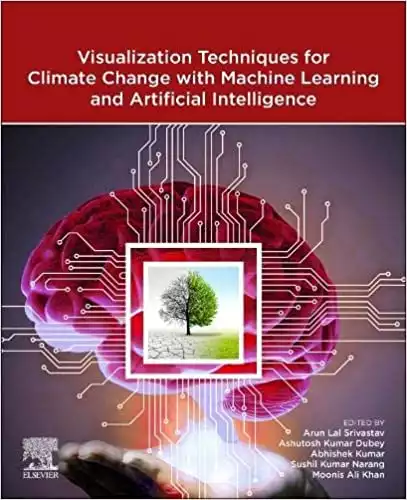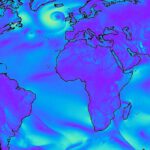Introduction
It is clear that artificial intelligence and machine learning can be used to provide a great deal of insight into the weather. The work that has been done on applying machine learning to forecast high-impact weather has shown us some of what’s possible. The possibility of accurate weather prediction increases ten fold with AI as it computes a lot of data to detect patterns that help with nowcasting and future casting.
Research has indicated that artificial intelligence can deliver forecasts that are on par with those of conventional models with a lower level of computing. Early research has shown that artificial intelligence can be used to forecast rainfall as well as nowcasting weather, which predicts the weather within the next hour or two.
AI can be a very powerful tool to nowcast or forecast the weather with great accuracy as it models itself after the traditional means of forecasting through weather observation. The advantage AI has is that it can go through multiple datasets to observe real time data, collate insights, patterns and learn from historical context for accurate forecasts.
There a lot of volatile variables within the atmosphere, such as turbulent air, high-pressure systems, and so on, that have to be forecasted for different times within the next hour, within the next day, and within the next week.
Table of contents
Also Read: AI and Power Grids.
Data Collection
In order to forecast weather, meteorologists collect and process observations of temperature and pressure, assimilate those variables into numerical computer models, extrapolate the models into the future, and use the projections as a starting point for future iterations.
The weather sensors and data loggers on weather satellites, on the ground, and in the oceans around the world are providing a wealth of weather and climate data in real time using IoT around the globe. The amount of information in the world is far too vast and overwhelming to be analyzed and scanned for patterns even by humans or even traditional computer programs. It is a problem because if we are unable to make sense of this deluge of information, then we are not utilizing this data to our advantage.
Fortunately, with artificial intelligence systems, machine learning, neural networks, deep learning, and their pattern-recognition capabilities, this is something that can easily be accomplished. It is possible to feed massive amounts of data into the system so that it learns to detect lightening and tornadoes in a storm. This kind of pattern recognition can be applied to both weather and climate datasets in order to spot patterns that could lead to destructive hurricanes or brutal snowstorms in the future.
Better data collection can improve our understanding of underwritten patterns within the ecosystem of the datasets collected. The better data we collect the smarter our algorithms can be to detect patterns and give us deeper insights into the possibilities of what weather could be in the future.
Traditional means of sifting through this data and keeping in mind the historical context while doing so is impossible by traditional means of data sifting. But with AI, and current computing / processing it is possible to make those connections and deliver accurate predictions.
Data Insights
Rather than relying on the laws of physics, the latest artificial-intelligence techniques train neural networks on the massive amount of data that is available. By reviewing weather data from the past, these networks develop their own understanding of how conditions evolve instead of using brute-force computation to forecast weather based on current conditions. As artificial intelligence systems attempt to feed their insatiable appetite for data, satellite meteorology and atmospheric science offer an ideal training ground that can be used to feed their insatiable appetite.
The National Oceanic and Atmospheric Administration sponsored the first conference on artificial intelligence in 1986, and since then, basic artificial intelligence techniques have been applied to weather and climate. However, recent advances in deep learning and increased availability of computers capable of running them have enabled a rapid increase in research.
A combination of machine learning and forecasting may also prove crucial to accurate “nowcasting,” which is a method of predicting the future at a rapid rate that conventional methods do not be able to provide. A couple of researchers at Google Research recently found that deep neural networks can predict rainfall in the next eight hours better than other state-of-the-art traditional weather models, even if no physical laws are explicitly encoded into them.
Also Read: Artificial Intelligence and Climate Change
Contextual History Based Prediction
In order to make predictions using the newly developed global weather model, rather than relying on detailed physics calculations, the model looks at the weather data that has been collected over the last 40 years. Using a simple, data-driven artificial intelligence model, researchers are able to simulate the weather around the world much quicker and almost as effectively as traditional weather forecasts, by using similar repeated steps from forecast to forecast, with reduced computing power, and this is called iterative forecasting. This process is good to detect high-impact weather events that can be used to save lives.
Weather forecasters today use numerical weather prediction models to deduce current weather patterns based on observations collected from sources such as weather stations, weather balloons, weather stations and satellites. These numerical models use observations to calculate current weather conditions based on equations that are used to calculate movement of air, current pressure in the atmosphere..etc.
However, the smaller a weather event is, the harder it is for these models to predict. In addition, forecasters who have been in this profession for a while are remarkably proficient at combining the huge amount of weather information they have to consider every day. However, their memory and bandwidth are limited unlike AI that can compute multitude of data points to understand weather systems to make predictions.
A number of challenges can be solved through artificial intelligence and machine learning, and forecasters are now using these tools in a number of ways, including making predictions of extreme weather that can’t be predicted by current models.
The probability that it will snow to cause blizzard conditions will occur based on a series of decisions trees developed using a machine learning method called “random forests.” The process uses many decision trees to split data up into different categories and then forecast the likelihood of different outcomes.
Similarly, the same method has been applied to forecasting extreme weather events such as tornadoes, large hailstorms, and severe winds associated with thunderstorms in recent years. Using machine-generated weather forecasts, National Weather Service forecasters are able to better determine the chances of hazardous weather on a given day based on the likelihood of hazardous weather occurring.
It is also becoming increasingly common for researchers to embed machine learning into numerical weather prediction models in order to speed up tasks that can be computationally intensive, such as predicting how water vapor will become rain, snow, or hail, which can be extremely time consuming. Thus making modern weather forecasts faster to predict.
Eventually, machine learning models may replace traditional numerical models or current weather models entirely. These systems, in contrast to the traditional models, would instead process thousands of past weather maps and great amounts of weather information to figure out how the weather systems tend to behave instead of solving a set of complex physical equations. In the end, they would use current weather data to make weather predictions that are based on what they have learned from the past and may lead to accurate weather forecasts and predicting unprecedented weather phenomena.
École Polytechnique Fédérale de Lausanne, a prestigious engineering school in Switzerland, has developed an inexpensive system that can be used to predict when lightning will strike to the nearest 10 minutes or 30 minutes in advance. Published in the journal Climate and Atmospheric Science.
The Confluence of AI and Meteorology: A New Horizon
Artificial Intelligence (AI) is revolutionizing many sectors, and meteorology is not an exception. The integration of AI in meteorology presents a new horizon for weather forecasting. Machine learning algorithms are becoming increasingly sophisticated, enabling them to analyze huge amounts of meteorological data and extract relevant patterns, thereby making weather predictions more accurate and precise. This has fundamentally transformed the way meteorologists predict weather phenomena.
AI can automate and streamline data processing in weather forecasting. Given the sheer volume of data that meteorologists deal with – from satellite imagery to radar and weather station data – AI can sift through and analyze data more quickly and efficiently than human forecasters. This allows meteorologists to focus more on complex forecasting tasks, improving the overall efficiency and accuracy of weather predictions.
Harnessing Machine Learning for Accurate Weather Predictions
Machine learning, a subset of AI, has proven to be a game-changer in weather forecasting. These algorithms can learn from past data and predict future outcomes. In the context of weather forecasting, machine learning models can analyze past weather conditions and identify patterns that indicate certain weather events. This provides meteorologists with a powerful tool to predict everything from temperature and precipitation to wind speed and direction with greater accuracy.
Machine learning can handle a multitude of variables in weather forecasting. Traditional models may struggle with this complexity, but machine learning can manage the interplay of numerous atmospheric factors, leading to more accurate forecasts. By incorporating machine learning, weather services can enhance their forecast accuracy, providing timely and crucial information to sectors like agriculture, aviation, and disaster management.
Improving Climate Models through AI: A Deeper Understanding of Weather Patterns
Climate models are vital tools for understanding and predicting climate change. However, they are incredibly complex and require a vast amount of computational power. AI can help simplify these models and improve their accuracy. Deep learning algorithms can be trained on vast amounts of climate data, learning the intricate patterns and relationships that define our planet’s climate system.
These AI-enhanced models can lead to a deeper understanding of weather patterns and their long-term impacts. For instance, they can improve our ability to forecast extreme events such as hurricanes, floods, and heatwaves, which are expected to increase in frequency and intensity due to climate change. This could significantly improve our capacity for climate resilience and adaptation planning.
AI in Real-Time Weather Monitoring: From Satellites to Ground Stations
Real-time weather monitoring is a critical aspect of meteorology, and AI is enhancing this process significantly. With a multitude of data sources, including satellites, radar, and ground stations, the integration of AI can help process and interpret this data more efficiently. Machine learning algorithms can be trained to automatically detect specific weather features in satellite imagery, such as storm systems or cloud formations, speeding up data analysis.
Not only does this make weather monitoring more efficient, but it also enables meteorologists to make more timely and accurate forecasts. By automating the analysis of real-time weather data, AI can free up meteorologists to focus on interpreting the results and making predictions. This blend of AI and human expertise can lead to more accurate and timely weather forecasts, benefiting industries that rely on weather predictions, from agriculture and retail to aviation and logistics.
Advanced Forecasting: AI’s Role in Predicting Extreme Weather Events
Predicting extreme weather events is one of the most critical and challenging aspects of meteorology. These events, including hurricanes, tornadoes, and blizzards, can have devastating effects, so accurate and timely forecasts are crucial. AI is proving to be a powerful tool in this endeavor. Machine learning models can be trained on historical weather data, learning the patterns and conditions that lead up to these extreme events.
Using AI, meteorologists can predict the occurrence, intensity, and path of extreme weather events with more precision than ever before. This can significantly improve our ability to prepare for and respond to these events, potentially saving lives and reducing property damage. As our climate continues to change, AI’s role in predicting extreme weather events will only become more critical.
The Use of AI in Hydrological Forecasting: Predicting Floods and Droughts
Hydrological forecasting, which includes predicting floods and droughts, is another area where AI is making significant strides. These forecasts are crucial for water resource management, agriculture, and disaster preparedness. Machine learning algorithms, trained on historical hydrological data, can detect patterns and predict future events, such as periods of flooding or drought.
In addition to prediction, AI can also play a role in the real-time monitoring of hydrological conditions. Machine learning models can analyze data from river gauges, rainfall sensors, and satellites to detect the onset of flooding or drought conditions, providing early warnings. This allows for more effective disaster management, helping to mitigate the impacts of these events.
AI and Big Data: Enhancing the Precision of Long-Term Weather Forecasts
Long-term weather forecasts are vital for various sectors, including agriculture, energy, and tourism. However, making accurate long-term predictions is a complex task, given the vast number of variables involved. AI and Big Data technologies are helping to tackle this challenge. Machine learning algorithms can analyze vast amounts of data and detect subtle patterns that may indicate long-term weather trends.
These AI-powered long-term forecasts can be more accurate and detailed, providing valuable insights for planning and decision-making. For instance, farmers can use these forecasts to plan their planting and harvesting schedules, while energy companies can use them to anticipate demand. As the amount of weather-related data continues to grow, the role of AI in enhancing the precision of long-term weather forecasts will only increase.
AI in Oceanography: Predicting Ocean Currents and Sea Weather
The oceans play a crucial role in our planet’s climate system, and understanding their dynamics is essential for accurate weather and climate forecasts. AI is beginning to be used in oceanography to predict ocean currents, sea temperatures, and other conditions. Machine learning models can analyze vast amounts of oceanographic data, identifying patterns and making predictions.
These AI-enhanced forecasts can improve our understanding of ocean dynamics and their influence on the weather. They can also be used for practical applications, such as planning shipping routes or predicting the spread of oil spills. As we continue to gather more oceanographic data, the use of AI in oceanography is set to increase, leading to more accurate and detailed forecasts.
Transforming Agriculture: AI-Powered Weather Forecasts for Precision Farming
Agriculture is highly dependent on weather conditions, and accurate forecasts are crucial for successful farming. AI-powered weather forecasts are transforming agriculture by providing more precise and detailed predictions. These forecasts can inform decisions about when to plant, irrigate, and harvest crops, leading to increased productivity and reduced waste.
AI can be used in conjunction with other technologies, such as drones and sensors, to monitor field conditions in real-time and adjust farming practices accordingly. This approach, known as precision farming, can optimize resource use and maximize crop yields. As the demand for food continues to grow, the use of AI in agricultural weather forecasting will become increasingly important.
The Future of Weather Forecasting: Emerging Trends in AI Technology
As AI technology continues to advance, its impact on weather forecasting will only increase. We can expect to see more sophisticated machine learning models that can analyze even larger datasets and make more accurate predictions. We can also expect the integration of AI with other technologies, such as IoT and cloud computing, to further enhance weather forecasting.
Looking further ahead, we may see the development of AI systems that can autonomously interpret and respond to weather data, providing real-time updates and forecasts without human intervention. This could revolutionize weather forecasting, making it more efficient, accurate, and responsive. As we face the challenges of climate change, the need for accurate weather forecasts will only increase, and AI will play a crucial role in meeting this need.
Conclusion
There is no doubt that artificial intelligence combined with machine learning, neural networks, deep learning, and high-performance computing will have a great impact on the quality of weather forecasting. In recent years, climate scientists and weather forecasters have been relying more and more on these tools to analyze massive amounts of data and determine patterns that could indicate severe weather or climate change, among other things. Predictive technologies combined with powerful algorithms will enhance weather forecasts significantly.
Advances in machine learning make a better promise for weather prediction and weather advances which can accurately predict heavy rain, inches of rain, rain accumulations, tracks of hurricanes, and other extreme weather conditions. We have come a long way from using primary tools to proliferation of tools augmented by vast amounts of data from various modeling earth systems, satellite images, and collaboration between scientists and their AI and machine learning experiments to predict the weather better.
Though there are major challenges to be perfect in predicting weather, we are slowly working away on smaller challenges in meteorology that deal with complex processes and human expertise and embedding them with AI and machine learning to add a sophisticated layer of computing and prediction.
References
Haupt, Sue Ellen, et al. Artificial Intelligence Methods in the Environmental Sciences. Springer Science & Business Media, 2008.
Kumar, Gupta, Rajeev, et al. Artificial Intelligence of Things for Weather Forecasting and Climatic Behavioral Analysis. IGI Global, 2022.
Santurette, Patrick, and Christo Georgiev. Weather Analysis and Forecasting: Applying Satellite Water Vapor Imagery and Potential Vorticity Analysis. Academic Press, 2005.












